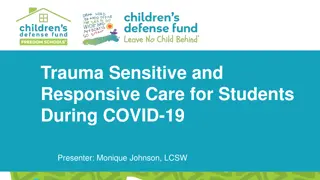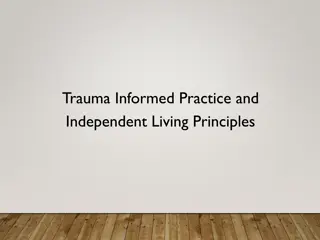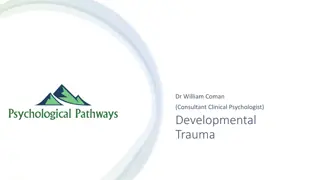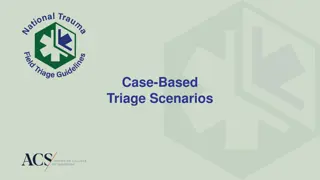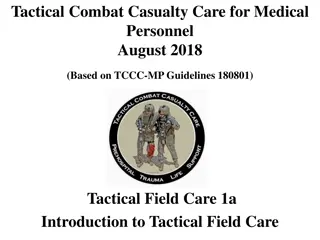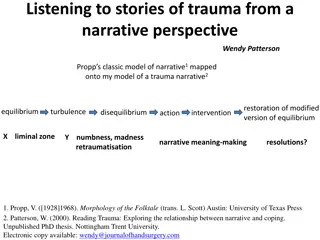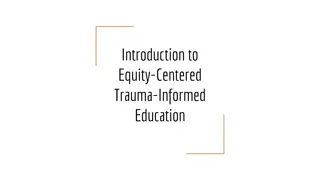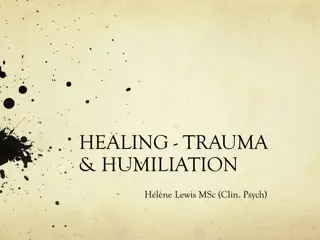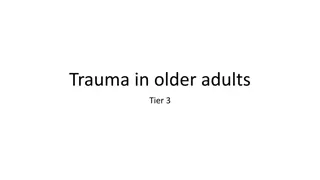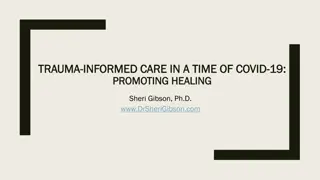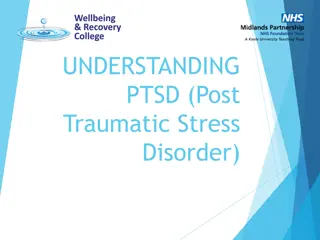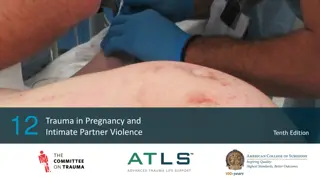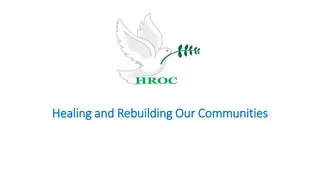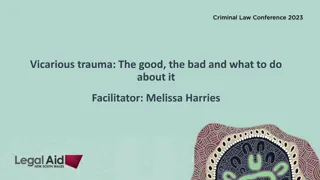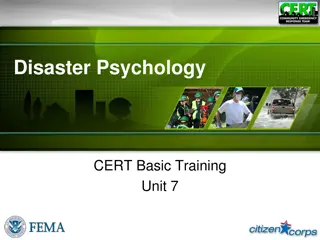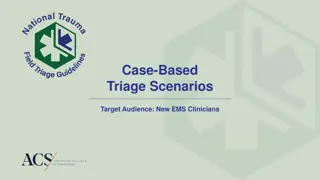Enhancing Trauma Treatment through Collaborative Care
Approach trauma treatment with a collaborative mindset to provide effective care. Understand client needs, interact thoughtfully, and implement tailored interventions. Focus on reducing avoidance behaviors, challenging beliefs, and decreasing maladaptive thinking. Measure success with trauma instruments like PCL-5 for positive outcomes celebration.
Download Presentation

Please find below an Image/Link to download the presentation.
The content on the website is provided AS IS for your information and personal use only. It may not be sold, licensed, or shared on other websites without obtaining consent from the author. Download presentation by click this link. If you encounter any issues during the download, it is possible that the publisher has removed the file from their server.
E N D
Presentation Transcript
Treatment of Clients Experiencing Trauma A Collaborative Approach to Care May 5, 2018 * Tex-CHIP Training Series
The Treatment of Trauma Symptoms Through Counseling
Understanding Provider Role in Treating Trauma To have an awareness and understanding of trauma To provide a safe environment Build rapport To be warm, empathic, non-judgmental, collaborative and genuine Gain the cooperation of the client To work with clients without retraumatizing them. Establish a common understanding of the client s traumatic event (Bicknell-Hentges & Lynch, 2009)
Considerations when Interacting with Clients Clients handle trauma differently Differing degrees of avoidance Clients may have a different understanding of why the trauma occurred Different beliefs about the impact it had on them or others Not all clients process trauma the same Written trauma narrative versus no narrative Don t underestimate your client s resiliency (Resick, Monson & Chard, 2017)
Our Treatment Plan Healthcare Domain: Behavioral Health Provider: LPC Goals: Interventions: Objective: Provide alleviation of presenting trauma symptoms as indicated by client report of: (a) Reduction in avoidance behaviors (b) Identification of stuck points and challenging her beliefs (c) Decrease in maladaptive thinking (d) decrease in scores on the PCL-5 and the PHQ-9 a) To drive to work with minimal anxiety or fear provoking symptoms. (In Cognitive Processing Therapy (CPT) the focus is on the trauma event). a) The counselor will also teach the client to identify stuck points, how to challenge beliefs, and how to use self- guided cognitive restructuring to decrease trauma symptoms. b) To focus and concentrate in school. (Goal b) & c) is associated with the trauma and the client s symptoms should alleviate as the trauma symptoms decrease.) b) The counselor will also teach the client patterns of problematic thinking to help the client decrease maladaptive thinking. c) To feel less irritable and sleep through the night. (CPT protocol does not have specific interventions to address this area) c) The counselor will teach the client the ABC worksheet as it relates to her trauma to identify the connection between thoughts, feelings and behaviors.
Measuring Outcomes/ Success Success is a success, no matter how big or small Always celebrate the little things Trauma treatment requires the use of trauma instruments Cognitive Processing Therapy uses PTSD Checklist for DSM-5 (PCL- 5) & Patient Health Questionnaire- 9 (PHQ-9) Weekly administration to track outcomes Client s verbal account of meeting agreed upon objectives & completing homework assignments (Resick, Monson & Chard, 2017)
Communication Needed From Other Providers If a client is in crisis do not start trauma treatment Refer client for services based on need Suicidal ideations or self-harming behaviors Psychiatric hospitalization or crisis stabilization Psychiatrist Medication regiment should continue to avoid sudden changes Inpatient/Outpatient Substance Abuse Treatment Detox may be needed Can participate in treatment but create safety plan Any other provider working with the client Legal issues, Medical concerns, Department of Family Protective Services










